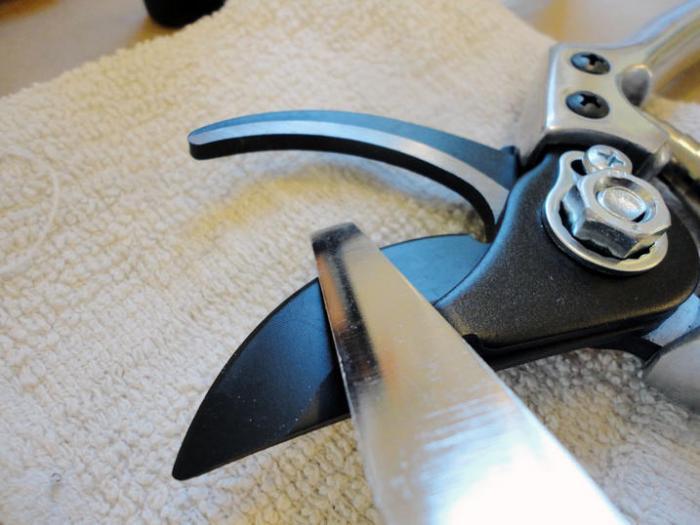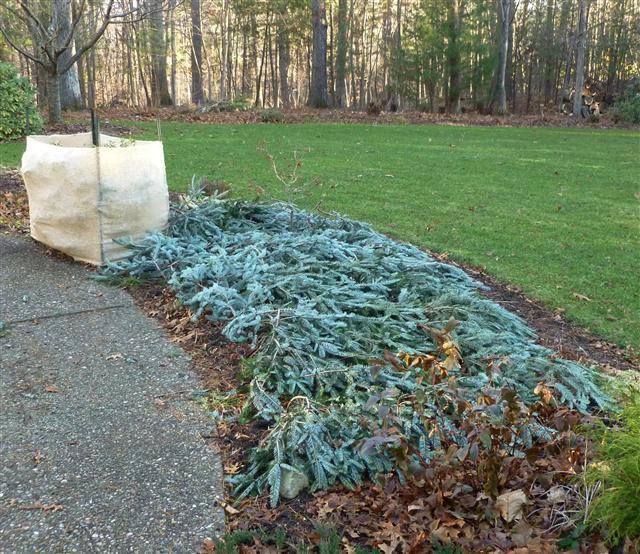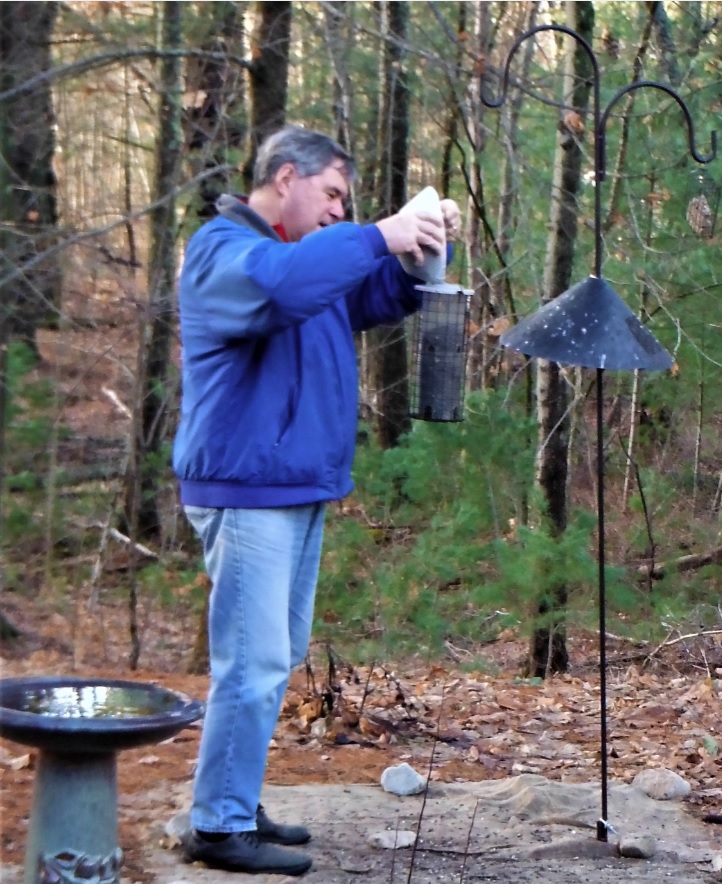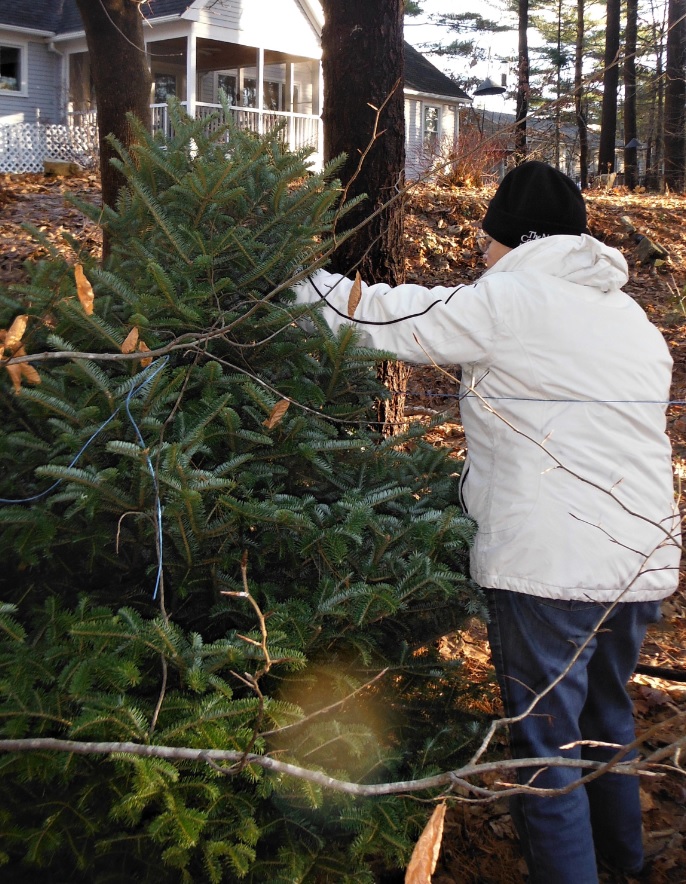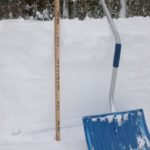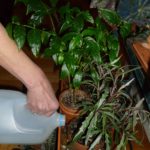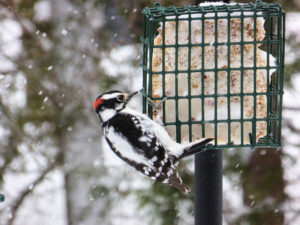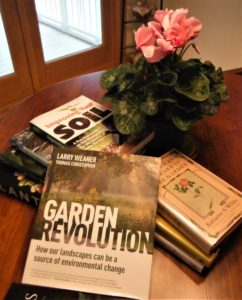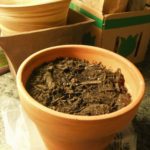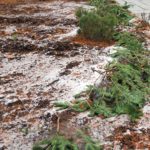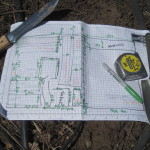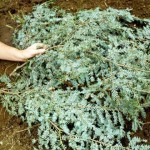Horticultural Hints – January
Start your year off clean, Use these days to clean your tools and prepare them for spring gardening. Clean tools to remove dirt and any lingering chemicals. Sharpen your pruners, loppers, shovels, spades and mower blades. Don’t know how to sharpen? Go to your favorite nursery where the staff can show you how, or check online for detailed videos that show you how to sharpen any blade. When finished sharpening, use a clean rag to put a thin coating of oil on each blade. If your tools live in an unheated garage or tool shed, this will prevent moisture from rusting the metal.
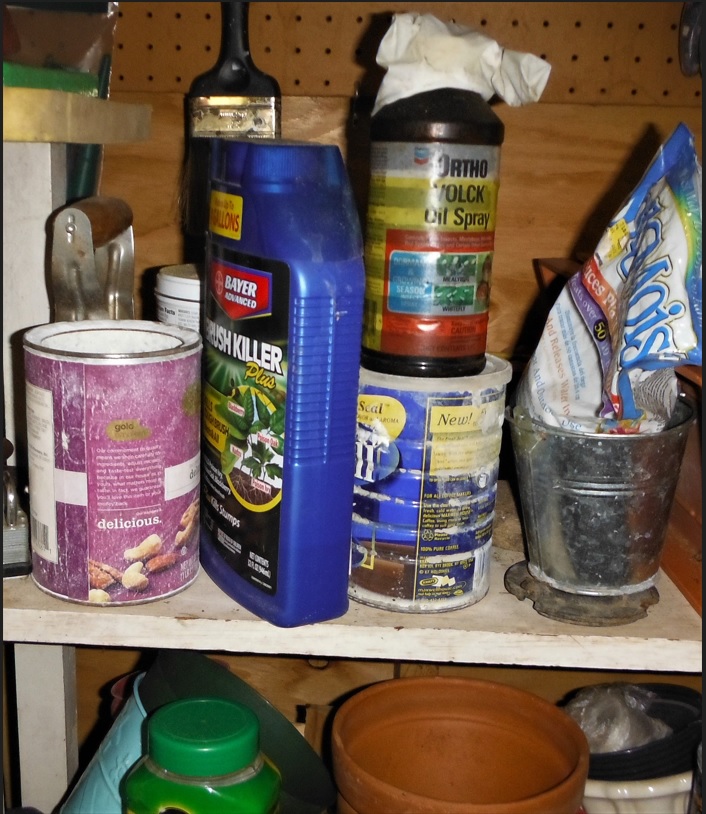 Start your year off green. Do you have leftover chemicals – pesticides, herbicides or fungicides hanging around your garage, garden shed or basement? These are serious poisons that must be disposed of properly. Contact your local Department of Sanitation or Public Works for the next chemical disposal day. And this year, use lawn and garden chemicals only when – and where – absolutely necessary to control specific pests and diseases.
Start your year off green. Do you have leftover chemicals – pesticides, herbicides or fungicides hanging around your garage, garden shed or basement? These are serious poisons that must be disposed of properly. Contact your local Department of Sanitation or Public Works for the next chemical disposal day. And this year, use lawn and garden chemicals only when – and where – absolutely necessary to control specific pests and diseases.
How do you avoid those chemicals? For starters, remember that healthy grass will crowd out most weeds. By contrast, repeated applications of lawn products kill the very valuable organisms that live in the soil and help grass to grow by providing nutrients naturally. Often soil organisms even kill off “bad bugs”. Many ‘problems’ are not truly problems. Crabgrass can grow only in sunny locations. Dandelions can easily be popped out of the ground with a Cape Cod weeder, or even an old screwdriver. Proper mulching prevents most weeds from growing in flower beds. Mildew on plants can be treated with a spray solution of baking soda and water.
Remember also most insects are beneficial or benign – don’t kill your friends. As for the remaining two percent, a strong spray from a hose, hand picking or soap solutions will take care of most of them. Attract birds that feed on insects by providing shelter and water (trees, shrubs and a clean bird bath.) Don’t create more problems than the insects did by killing off the good with the bad.
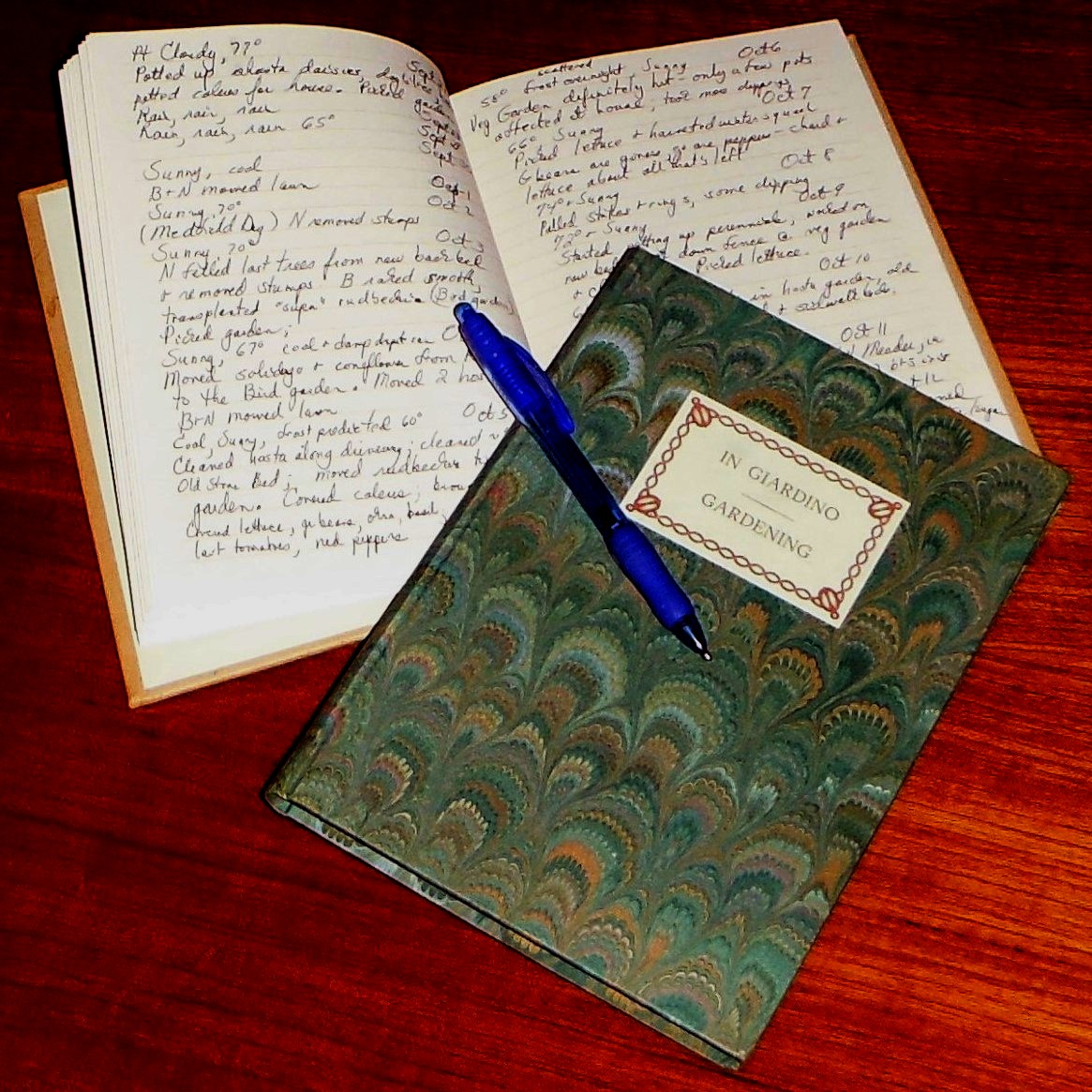 Build on what worked. The start of a new year is an excellent time to begin keeping a garden journal. Start with your memories of what worked best in last year’s gardens. Use those to guide your plans for this year, always remembering in no two years are the weather, insects or anything else ever the same.
Build on what worked. The start of a new year is an excellent time to begin keeping a garden journal. Start with your memories of what worked best in last year’s gardens. Use those to guide your plans for this year, always remembering in no two years are the weather, insects or anything else ever the same.
Recycle! Branches from your Christmas tree can help protect perennials from ice and heavy snow loads. Using pruners, loppers or a hand saw, you can reduce a tree to its usable branches in a few minutes. The branches can stay in place until the first foliage from your garden bulbs or perennials appear. In the photo at right, a Daphne atlantica is protected from deer by burlap – wrapped not around the shrub, but around four garden stakes.
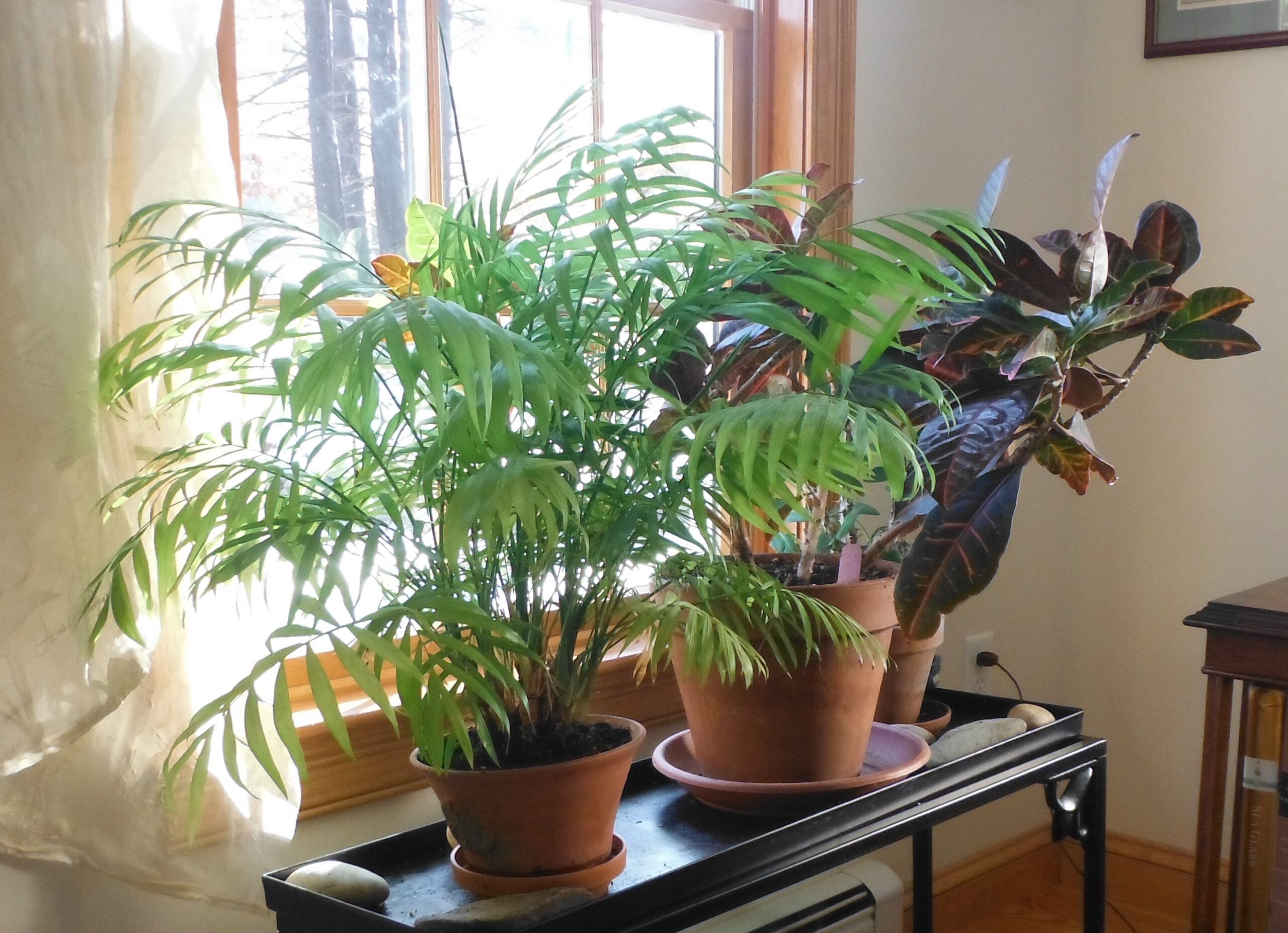 Turn, Turn, Turn. Your houseplants may be inside and warm, but don’t forget their need for light and humidity. Give each plant a quarter turn each week. If you use plant trays, clean those trays frequently to prevent bacteria and odors from growing in the water the trays collect.
Turn, Turn, Turn. Your houseplants may be inside and warm, but don’t forget their need for light and humidity. Give each plant a quarter turn each week. If you use plant trays, clean those trays frequently to prevent bacteria and odors from growing in the water the trays collect.
Lights off. Choose a relatively warm day this month to take down outdoor lights from trees and shrubs. By not waiting, you’ll avoid the need for extra care to prevent damage to swelling leaf and flower buds.
Christmas trees aren’t just for the holidays. They can brighten our spirits all winter. Instead of throwing it out to the curb, when you take down your tree, place it upright, out of strong winds, to provide shelter for birds. If located near feeders, the trees provide a safe place for birds to eat or to wait their turn.
A January bath improves houseplant health. Use a plastic bag to cover the soil and place the plant in a sink or tub and spray gently with tepid water. By removing dust and any household pollutants, you’ll do your plants a world of good as well as improve their appearance. Wiping each leaf with a clean cloth can serve the same purpose but is much more time consuming.
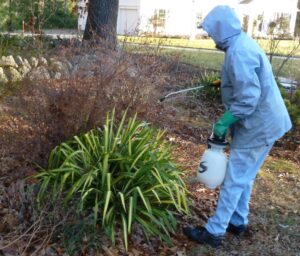 Spray your plants to save them. Winter is cruel to our plants. Harsh winds dry the leaves of the evergreens and hungry deer, rabbits and other varmints will eat almost anything they find. On warm dry days, you can spray evergreens with an anti-desiccant such as Wilt-Pruf that helps the leaves and needles retain moisture. A monthly spraying on another warm day with an animal repellent may prevent leaves and flower buds from disappearing into the stomachs of browsers.
Spray your plants to save them. Winter is cruel to our plants. Harsh winds dry the leaves of the evergreens and hungry deer, rabbits and other varmints will eat almost anything they find. On warm dry days, you can spray evergreens with an anti-desiccant such as Wilt-Pruf that helps the leaves and needles retain moisture. A monthly spraying on another warm day with an animal repellent may prevent leaves and flower buds from disappearing into the stomachs of browsers.
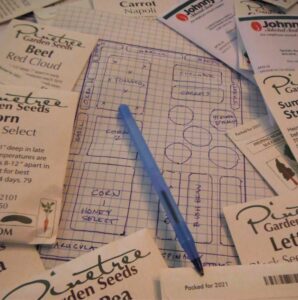 If you haven’t ordered vegetable seeds already, get busy. Most companies’ seed catalogs are available on line, so there’s no need to wait for a printed catalog. Overwhelmed in 2020 and despite their planning for 2021, seed crop failures and the influx of new buyers have put a strain on some seed supplies. I ordered for 2021 in December and was able to get only 75% of my original list. I made alternate selections for others. I was not ordering flower seeds, but I wouldn’t wait to order any seeds.
If you haven’t ordered vegetable seeds already, get busy. Most companies’ seed catalogs are available on line, so there’s no need to wait for a printed catalog. Overwhelmed in 2020 and despite their planning for 2021, seed crop failures and the influx of new buyers have put a strain on some seed supplies. I ordered for 2021 in December and was able to get only 75% of my original list. I made alternate selections for others. I was not ordering flower seeds, but I wouldn’t wait to order any seeds.
Resolve to have a vegetable garden this year. Catalogs and garden centers are full of specially bred vegetables that don’t require much space; just a container with good soil, placed in sunlight and regularly watered. Remember to add a few marigolds to discourage pests and no one will recognize it as your vegetable garden.
Toss holiday poinsettias as soon as they begin to drop leaves. It’s a tropical plant that requires a greenhouse to survive, let alone re-bloom, in New England. Once those bracts are gone, you’re left with a spindly, leggy plant that is toxic to pets.
Water sparingly between now and spring. If you keep your houseplants constantly wet (overwatered), they become a perfect breeding ground for fungus gnats. Those gnats, in turn, will quickly look for other plants to colonize. Allow soil in the pot to dry out somewhat between waterings.
Pray for snow! Of course, you have added leaves around new plantings to protect them from sub-freezing temperatures and frost heaves, but now it’s time to look for more help from Mother Nature. Snow is a natural insulator and a very efficient one—ten inches of snow provide the same insulation as six inches of fiberglass. Snow keeps roots happily buried, not subject to freeze and thaw cycles.
Skip the salt. Once the snow arrives, avoid using salt on sidewalks and driveways. Sand or kitty litter will provide traction and even assist in melting as it warms on sunny days. Best of all, there will be no damage to your plants now, or when the ground thaws in the spring. The sand or litter will disappear into the garden soil without damaging to roots or poisoning the soil.
Filling a tray with pebbles and adding water gives houseplants the humidity help they need in the winter
Be kind to your houseplants. Winter may be cold and dry for outdoor plants, but our indoor plants suffer from hot and dry. With the thermostat set at 68 or 72 degrees, you are drying out the air as you warm it. Place plants on a tray covered with pebbles where you regularly add water. As the water evaporates, your plant breathe easier. Plants too big to be gathered together? Add pebbles and water into large saucers under each individual. Additional humidity in the house is also a benefit to you.
Plants also need regular watering, but less than in other seasons. Unless you are using grow lights, your plants will respond to the reduced light by slowing down their growth which also eliminates the need for fertilizing.
Be kind to the birds. Not only do birds enliven your garden, they are your friends. Birds eat caterpillars all spring and summer. So, during the coldest months when much of their food has disappeared or is buried under snow, put out seed and suet feeders. They’ll entertain you and pay back your kindness come spring.
January is a great time for reading! This Christmas I received Garden Revolution by Larry Weaner, subtitled, ‘How our landscapes can be a source of environmental change’. In the book, he tells how his one-third acre near Philadelphia has been transformed into a wildlife habitat that has wonderful sites for humans to relax on his patio near flowers and colorful shrubs and trees while enjoying the birds and other attractive wildlife by working with nature rather than against it. For those of us who want Mother Nature to do more of the work, Weaner offers well written and practical advice.
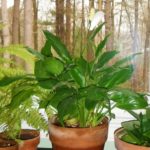
Spathiphyllum – more commonly called the peace lily – requires little light and retains its blooms for long periods
Looking to dress up a low-light area of your home? Try any plant that can tolerate low-light sun and brighten homes with their beauty and interest. Calathea and anthurium both have bright flowers that add long-lasting color before fading. Another low light treasure are peace lilies (spathiphyllum) a plant with glossy foliage, long-lasting white ‘flowers’ and the ability to remove indoor toxins such as benzene and trichloroethylene from the air. You don’t need to be an expert to grow these plants that are forgiving of occasionally drying out and a reminder that winter will be replaced by spring.
Never give up. When rooting about in my basement for missing Christmas ornaments, I found a bag with several daffodil bulbs. The ground was frozen, meaning it was too late to plant them outside, but I was not ready to toss them into the compost heap. I planted the bulbs in a large pot, placing them much closer together than you would in the ground. For the month of January, they will sit in the cool basement to grow some roots into the potting soil. In early February they will go out into the colder part of my garage where they can get the 12 to 16 weeks of “chilling” required for bloom. After the ground has begun to thaw in the spring, I will put them on a porch and as soon as green tips appear, they will go out into the sun. With a bit of luck, the bulbs will bloom next April and I can plant them in the ground for future years after the flowers are gone.
Protect new plantings. If you haven’t chucked out your Christmas tree, use loppers or a saw to cut off the branches and place a light layer of those branches over shallow-rooted plants in your garden. The branches help to shade the plants preventing thawing of the soil around the plants and damage to the roots when it refreezes. Have an artificial tree? Your neighbor may be thrilled to share their fresh-cut one. Any evergreen branches from fallen trees, or that you used to decorate around your house will also help plantings survive our freeze and thaw cycles — the most dangerous part of winter for most plants.
Effects of a Hot December. Did you take advantage of the warm weather to complete your autumn chores? Did you enjoy the unanticipated displays of cherry blossoms, forsythia and other unexpected flowers before the late arrival of cold weather? For most plants, the long, warm autumn did no lasting harm. There may be a few missing blossoms but, in general, the lingering warm weather allowed plants to soak up the water that they did not get during the dry summer or early fall. Once the ground freezes the trees and shrubs can no longer take up water while cold drying winds take moisture out of the leaves and needles of our evergreens. While spraying antidessicants on them can help, plants do best when they have been able to fill roots with moisture before winter settles in.
The greatest danger to your plants is not the cold but the warm days that can lead to the plants being pushed up out of the ground when it freezes again, exposing roots to killing temperatures. Once the ground freezes, you can help perennials and newly planted trees and shrubs better survive any winter thaws by topping them with a covering of leaves, straw or the branches from your Christmas tree.

Researching the growth habits of trees and plants before you purchase them can prevent unwanted problems down the road.
Stop, Look and Learn Before You Shop. Want a tree to block the view of a neighbor’s hot tub? How much sun do you have and how much does your first tree choice need? How fast does it grow, and how tall or big around will it get? And how long will that take? This is a good month to do some armchair research toward next spring’s purchases. Look at the breeder’s notes, but also look at the information offered by those who are not trying to sell it to you. Go on websites that end with .edu — indicating that education, not sales is their business. I prefer university sites such as UMass, URI and UNH plus Cornell. Their climate is our climate and the professors and students are dealing with our problems and plant material. Look at articles written by respected writers such as Michael Dirr and Bill Cullina on trees, Rick Darke and Doug Tallamy on environmentally appropriate plantings, Edward Smith and Barbara Damrosch on vegetable gardening. There are many more, but you are looking for unbiased, sound advice so it is a good idea to stay away from the .coms and other commercial sites. Of course, once you have found the perfect tree, shrub or perennial, look to the nursery sites for availability.
January is the time for gardeners to spend on reading, writing and ‘rithmetic.
 Many wonderful books have come out in the last year. Catch up on one or two during your indoor days. My favorite this year was “The Living Landscape” by Rick Darke and Doug Tallamy. Superb photos matched by insightful writing on how to create or recreate a garden that provides beauty and comfort for the homeowner, a place for the vital wildlife (micro and up) and a chance to make your corner of the world one that aids the environment instead of damaging it.
Many wonderful books have come out in the last year. Catch up on one or two during your indoor days. My favorite this year was “The Living Landscape” by Rick Darke and Doug Tallamy. Superb photos matched by insightful writing on how to create or recreate a garden that provides beauty and comfort for the homeowner, a place for the vital wildlife (micro and up) and a chance to make your corner of the world one that aids the environment instead of damaging it.
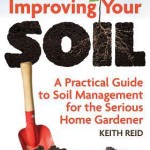 Don’t even think about put a trowel in the ground until you have read one book on soil. “Improving Your Soil” by Keith Reid isn’t a title that promises an exciting read, but for the gardener it’s a must read. Along with old favorite “Teeming with Microbes”, you will be reminded that there is no great garden without great soil. It’s the bacteria, fungi, worms and other creatures we aren’t always thankful for that make our soil great—if we’ll lay off the chemicals and let them.
Don’t even think about put a trowel in the ground until you have read one book on soil. “Improving Your Soil” by Keith Reid isn’t a title that promises an exciting read, but for the gardener it’s a must read. Along with old favorite “Teeming with Microbes”, you will be reminded that there is no great garden without great soil. It’s the bacteria, fungi, worms and other creatures we aren’t always thankful for that make our soil great—if we’ll lay off the chemicals and let them.
Now for your writing. I am encouraging everyone to start a garden journal — again. If a pretty hardcover book will get you going, find one. If you prefer to work online, type away. If you are like me and take your notebook into the garden and don’t care if your hands are dirty, use a spiral bound notebook from Staples. Start today and don’t stop. If all you have to say is that it is too cold to go outside today, put that down. Next time the temperature dips well below freezing you might note that the leaves on your rhododendron have curled into tight ‘cigarettes’. Note that. Keep writing until it becomes as habitual as brushing your teeth.
And now the arithmetic! It’s time to plan gardens for the coming season. Is it time to add new shrubs to replace overgrown old ones — or to get rid of invasive plants like burning bush? Before you decide you what you will buy or how many, check the dimensions of the area and learn how large the plant you are considering will grow. Mature rhododendrons in our yard, range from 30 inches tall and 30 inches wide to 15 feet wide and 12 feet tall despite frequent pruning. Some ‘dwarf’ trees are dwarfs only compared to the ‘mother’ tree’s 80 or 100 foot height. Know before you plant.
What are you planning in your vegetable garden? Did you have enough lettuce seed for your fall crop? Did you have much more zucchini than you could even give away? Make up your list of seeds from catalogs based on what your family can use. And redesigned your garden to make the most of it. I have 600 square feet and plant four different squash plants to keep myself, Neal and our neighbors in zucchini. Have a small garden? You may need only one plant and can use the space for something else.
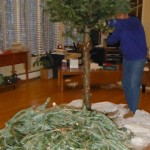
The branches from your Christmas tree make an excellent ground cover (and cutting the tree up indoors makes it easier to get outside!)
Protecting your plants. Since early November the weather has been on a roller coaster; below zero temperatures followed by 40’s and 50’s. Snow followed by rain, then rain followed by snow. Our New Year’s snow is a great insulator if it survives the next round of warmer weather. For plants hardy in our zone, cold temperatures are not a problem, but cold periods followed by warm-ups are.
The plants face two threats. Frozen ground suddenly thawed will thrust upward, pushing plant roots out of the ground, leaving them exposed in the next cold spell. Prolonged warm spells can convince a plant to start its spring growth. In each case, the result when the cold returns is damage or even death.
If you covered your garden beds with a layer of chopped leaves or other mulch in the fall, they are protected from the worst effects of the changing weather. It is not too late to give your plants a better chance by covering them (even over snow) with branches from your Christmas tree. Keeping sun off the bare plants will reduce the effect of weather fluctuations and increase the odds of their survival.
While many leftover seeds from last year will grow this year, some – such as onions, corn, parsnips – do not store well. If you are not certain, put ten seeds from a packet in a wet paper towel. Keep it moist and warm and check to see how many sprout. If it’s fewer than seven, buy new.
Resolve to add houseplants. Many house plants do more than decorate our homes. Every day, they remove pollutants from the air, making the air better to breathe; something that is particularly important now when we are spending more time indoors.
Peace lily (spathiphyllum) is the one plant to have if you have only one. It is easily grown and highly effective at cleaning air of benzene, formaldehyde, xylene, toluene, trichloroethylene and even carbon monoxide. (We have one in almost every room of the house.) Others that rank highly taking out many pollutants include snake plant (sanseveria), spider plant, areca palms and philodendron.
Remember your houseplants are more effective if given a monthly shower in the sink to keep the leaves clean. Wiping the leaves of large plants with a damp cloth will also help to keep your plant a healthy and attractive addition to your home.
Keep your Christmas tree around. Temperatures have dropped into the danger zone for plants that are not securely tucked away for winter, but your Christmas tree can help those tender plants through the season. Cut the branches off your tree and use them to mulch flower beds or around the base of new shrubs. At this time of year, the goal of mulch (including the snow covering your garden) is to keep the soil cold and prevent roots from being heaved out into the air by freeze-and-thaw cycles. Plants in sunny areas may need your help the most. Young trees can also benefit from a gentle wrapping with burlap to prevent the sun from heating and splitting the bark on the trunk.
Try a little tenderness (or humidity). The one thing houseplants suffer from the most during the winter is the dryness of our homes. While keeping plants grouped together is helpful, the best way to raise the humidity level is to set the plants on trays of pebbles. Keep water in the tray just below the top of the pebbles so the plants will enjoy the humidity without the risk of being accidentally overwatered.
Finally, houseplants should never be placed where they touch the window. On many winter nights, the glass is cold enough to damage the foliage.
When we get snow, be careful removing it from walks and driveways. Never throw snow on shrubs or the branches of trees. Gently brush snow off laden branches to help the plant return to its natural form. Try to shovel your way out of the house. Footsteps or tire tracks in even light fluffy snow will create patches of ice where the snow is compacted. Getting rid of ice is more difficult and even more dangerous to your plants. Remember that ice salts do not work instantly. Use minimum amounts of ice melting salts and wait to see if the resulting melt allows you to shovel up the remainder. And don’t apply salts when it is too cold for them to work. Calcium chloride is only useful to 15 degrees. The newer ice melts stop working at 5 degrees. Salts will damage both the leaves and needles of plants it lands on, (think about all the dying pines along Routes 128 and 495) and the roots as it seeps into the ground. Where possible use alternatives such as sand or cat litter that will disappear into the garden or lawn in the spring.
Winter moths dancing around your lights in December are not a happy sight—you are probably facing an infestation of winter moth caterpillars in the spring. When they hatch in early Spring – anytime between late March and mid April – the small green caterpillars will tunnel into the leaf buds of oaks, maples, fruit trees and many others. They leave the tree weakened, requiring it to produce a second set of leaves. Most trees can survive one or even two years of this, but eventually the repeated stress will kill them. You can spray small trees now with dormant oil (on days when the temperature is above 45 and no hard frost predicted that night) to smother the egg masses. When the caterpillars hatch a biological product based on spinosad is the best control. For large trees, call an arborist, particularly if your trees suffered last year.
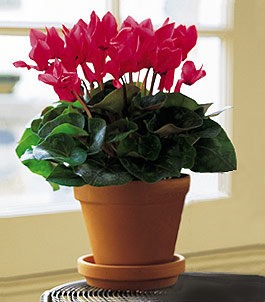 Cyclamen Rescue. First, not all holiday gift plants will be long-lived houseplants. Poinsettas take the patience of Job to re-bloom, amaryllis need at least a year to repeat their glory. But cyclamen can be perennial pleasers. We have one plant that has been with us now for 15 years. It may look ragged at times, but it blooms faithfully every winter.
Cyclamen Rescue. First, not all holiday gift plants will be long-lived houseplants. Poinsettas take the patience of Job to re-bloom, amaryllis need at least a year to repeat their glory. But cyclamen can be perennial pleasers. We have one plant that has been with us now for 15 years. It may look ragged at times, but it blooms faithfully every winter.
The cyclamen that came into your home was raised in a greenhouse. It was given carefully controlled daily doses of water and fertilizer. Temperatures are adjusted to encourage the optimum growth and artificial lights provide for optimum light for blooming. Then we bring them into our homes where the air is painfully dry from central heating, the light on the table where reside or the mantel they decorate is not likely to be what they have grown used to. So don’t be surprised when your beautiful specimen suddenly has yellow leaves and drooping flowers, and don’t throw it out. Cut off dead and dying leaves, it had more than it can possibly support in its new home. Place it in the coolest room in the house, even the basement if it can sit next to a window. Cut back watering to once a week. The dying should stop in a couple of weeks and then you may see new leaves or even flower buds. Return it to hot rooms for only short periods of time. In the spring, set it outside in a well shaded location (ours summer under rhododendrons) and return it to the house in the fall. You may well be celebrating Christmas 2012 with it in a place of honor again.
Blankets Christmas brought a snowstorm that provided a lovely blanket on our gardens for a week, but then the new year brought the first thaw. The protection provided by a covering of snow is important to keep shallow rooted plants from heaving during frost and thaw cycles. If you had a cut Christmas tree this year, cut off all the large branches, then use them to create a light covering over perennial beds. Greens you used to decorate around your home, even wreaths, can be placed over gardens, right on top of the snow or bare ground, to protect the plants underneath . And if you have any mulch left over from last year, place that over the garden at a depth of 2 inches. You will not only protect plants for the winter, but save yourself some work in the spring. Remove greens in the spring when bulbs begin to show.
Dedicated recyclers may want to burn their Christmas tree in the fireplace, but it’s better to have it chipped for a mulch to go on your garden.
Houseplants Most of our houseplants are still resting through the short days of winter. Water (with room temperature water) only if the soil feels dry or the plant droops. Houseplants that were received as gifts have come to you from greenhouses and are in shock. Where is the high humidity, the bright lights, the perfect watering, they enjoyed in their old home? If they are losing a few leaves, or even more than a few, don’t despair. They are adjusting to their new environment and may well recover to be a long-lasting delight. I have a 14- year old cyclamen that came indoors in October with one leaf (after a summer under a rhodie) and now has a dozen plus leaves and an equal number of flowers.
Keep humidity high by clustering plants together, misting or placing pots on pebbles which hold water. [Make certain the pots stay above the water level to prevent root rot.] Central heating means bone dry air that promotes insects such as spider mites and cultural problems. And the dry air is not good for you either.
Composting Don’t forget to keep an open path to your compost bin. While kitchen scraps (and dead floral arrangements) can be kept in the house or garage during the coldest and snowiest periods, adding them to your compost bin now will lead to the pleasant surprise of a bin full of quantity of compost in the spring. Don’t have a compost bin? Make a resolution to start one at the first sign of spring. MHS will be selling closed bins that discourage scavengers.
New Plants The catalogs and magazines are filled with glowing descriptions of new plants. Sad experience has taught me to forego most of these. Too often plants are released before they have been proven in field tests or exposed to the ‘real’ growing conditions of New England.
We have all purchased the exciting new plant, promised to be hardy to zone 5, that died the very first winter in zone 6. Or the hybrid that reverted to its old form after one year. I have vowed to stick with plants that have proven themselves with time. The sole exception: annuals since my investment is smaller and my expectations are for just one the season. But beware, one lovely yellow grass promised to grow to 30 inches, but barely made it to 12, leaving my containers looking flat.
Here are some other thoughts about dealing with snow: First, because salt damages plants, keep the use of salts on walkways and driveways to an absolute minimum. Often, you can make surfaces safe with sand, kitty litter and sawdust, none of which affect plants. Second, even though there may be snow on the ground, steer clear of areas with plants and perennials underneath as walking on them now will damage them. The same advice goes for grassy areas as well: you can inadvertently compact soil, depriving roots of oxygen. Take your winter walks on paths.
